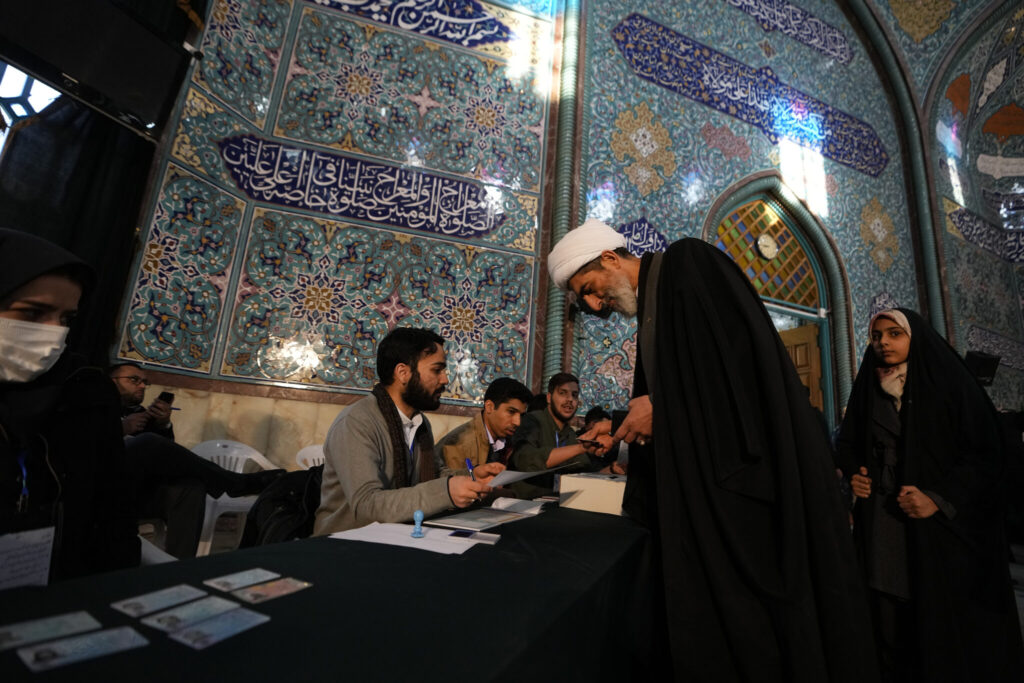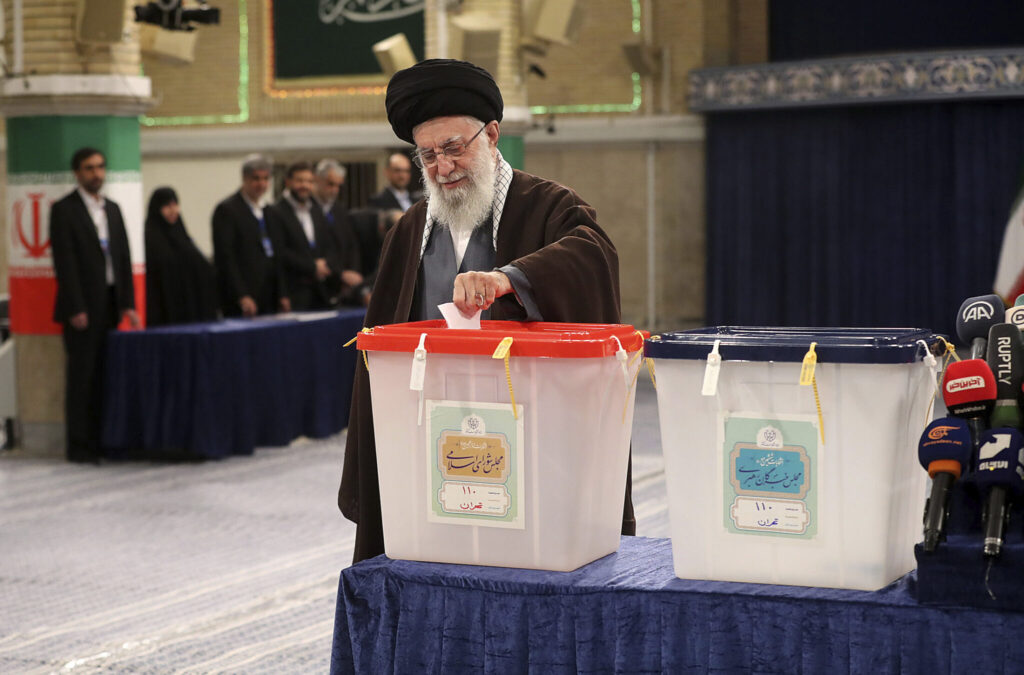Iran on Friday held its first parliamentary election since mass 2022 protests over mandatory hijab laws after the death in police custody of Mahsa Amini, with questions looming over how many people will turn out at the polls.
Quick Read
- Iran held its first parliamentary elections since the 2022 protests sparked by Mahsa Amini’s death, with turnout and public engagement levels uncertain.
- Supreme Leader Ayatollah Ali Khamenei and officials urged participation, but Tehran polling stations saw low voter turnout.
- The election largely features conservative or hard-line candidates due to the exclusion of reformist figures seeking changes within the theocracy.
- Iran’s economic challenges persist, exacerbated by sanctions related to its nuclear advancements and regional military involvements.
- The election also includes choosing members for the Assembly of Experts, responsible for selecting a new supreme leader, highlighting its significance given Khamenei’s age.
- About 15,000 candidates are competing for 290 parliamentary seats, but only a small fraction are considered moderate or pro-reform.
- The parliament, under hard-line control, has historically focused on issues like nuclear policy and the mandatory hijab, reflecting tensions with Western nations.
- Nationwide protests following Amini’s death, leading to a significant security crackdown, have influenced calls for an election boycott.
- State polling suggested potentially low turnout, especially in Tehran, amidst calls for boycotts by activists like Nobel laureate Narges Mohammadi.
- Security forces were heavily deployed, with over 59,000 polling stations and significant personnel overseeing the election process.
The Associated Press has the story:
Iran votes in its first parliament election since 2022 protests
Newslooks- DUBAI, United Arab Emirates (AP) —
Iran on Friday held its first parliamentary election since mass 2022 protests over mandatory hijab laws after the death in police custody of Mahsa Amini, with questions looming over how many people will turn out at the polls.
Iranian officials and even Supreme Leader Ayatollah Ali Khamenei have urged the public to cast ballots, but polling stations in the country’s capital, Tehran, appeared to have few voters.
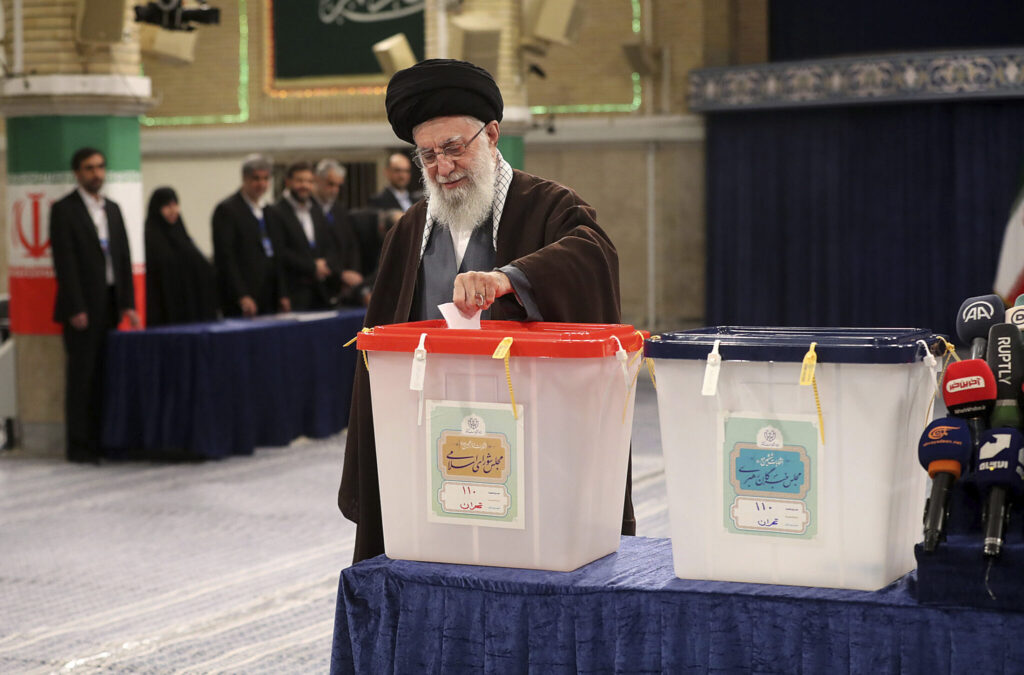
Authorities have largely barred politicians calling for any change within the country’s theocracy, known broadly as reformists, from running in the election — leaving mostly only a broad slate of conservative or hard-line figures.
Iran’s economy continues to stagnate under Western sanctions over Tehran’s rapidly advancing nuclear program and the country’s arming of militia proxies in the Middle East and Russia in its war on Ukraine.
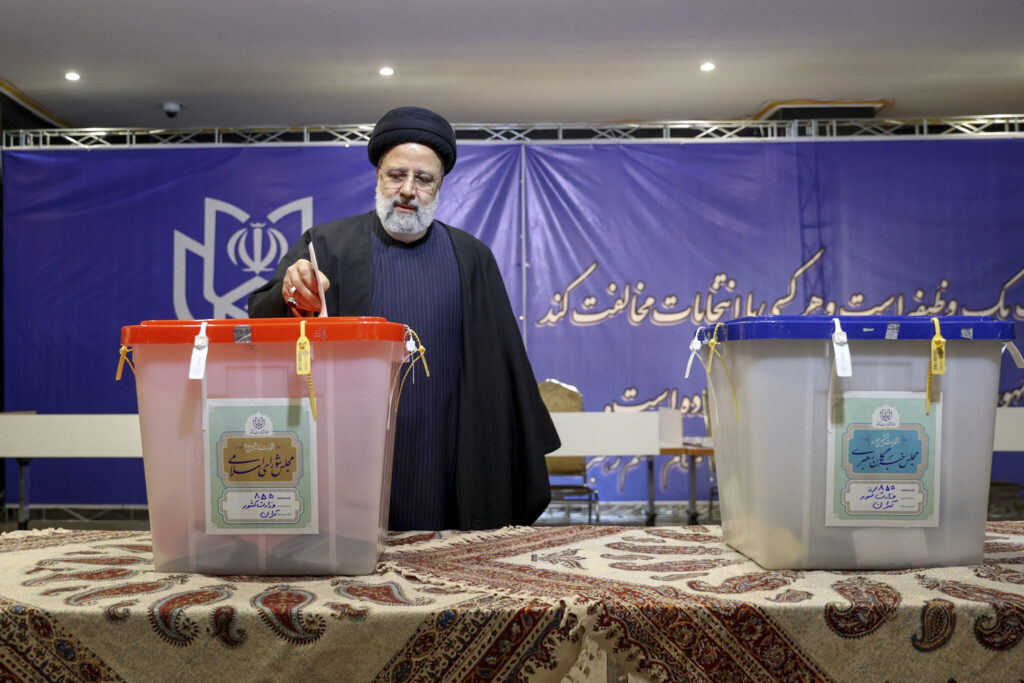
Some of the voters acknowledged the challenges facing the Islamic Republic.
“There are many problems; too many problems,” said one voter, who just gave her last name, Sajjad. “We are sad, we are sorrowful and we voice our criticism as much as we can. God willing, those responsible (will) start thinking about us, and probably many of them do care.”
Khamenei, 84, cast one of the first votes in an election that also will pick new members of the country’s Assembly of Experts. The panel of clerics, who serve an eight-year term, is mandated to select a new supreme leader if Khamenei steps down or dies, underscoring its increased importance, given Khamenei’s age.
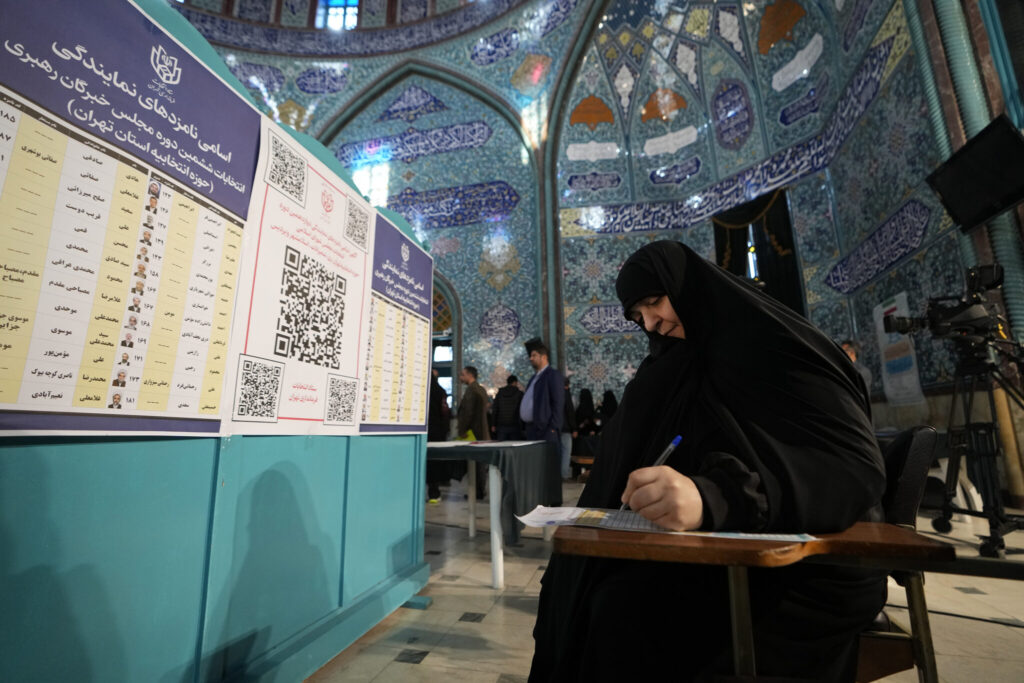
Khamenei voted before a crowd of journalists in Tehran, his left hand slightly shaking as he took his ballot from his right, paralyzed since a 1981 bombing. State television showed a woman nearby weeping as she filmed Khamenei with her mobile phone.
He urged people to vote as soon as possible, saying that both Iran’s friends and enemies were watching the turnout.
“Pay attention to this, make friends happy and disappoint the evil-wishers,” he said in brief remarks by the ballot boxes.
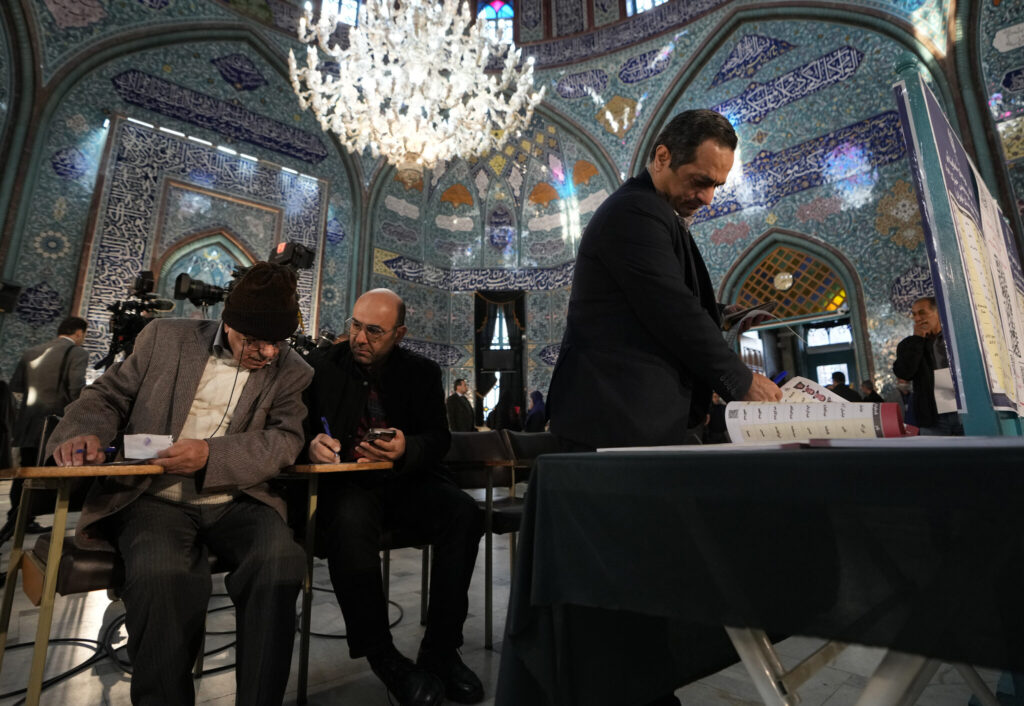
Khamenei’s protégé, hard-line President Ebrahim Raisi, repeated that call and urged the public to make it “a glorious day for the Iranian nation.”
About 15,000 candidates are vying for seats in the 290-member parliament, formally known as the Islamic Consultative Assembly. Out of them, only 116 are considered to be relatively moderate or pro-reform candidates. Those demanding radical changes are banned or didn’t bother to register given widespread disqualifications by authorities.
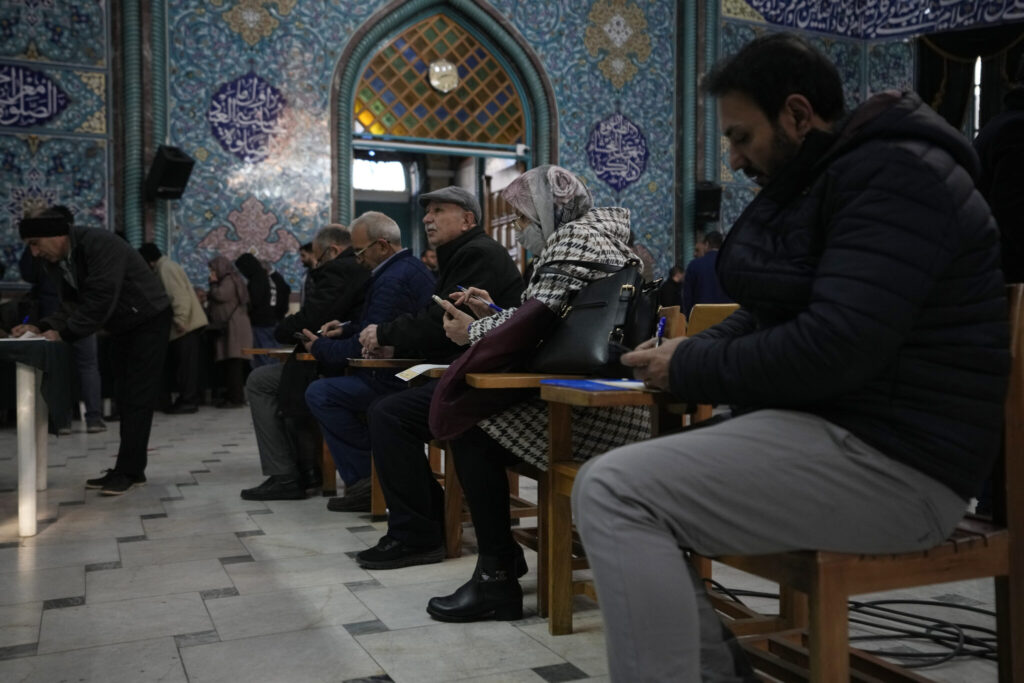
Parliament terms run for four years, and five seats are reserved for Iran’s religious minorities.
Under the law, the parliament has oversight over the executive branch, votes on treaties and handles other issues. In practice, absolute power in Iran rests with its supreme leader.
Hard-liners have controlled the parliament for the past two decades — with chants of “Death to America” often heard from the floor.
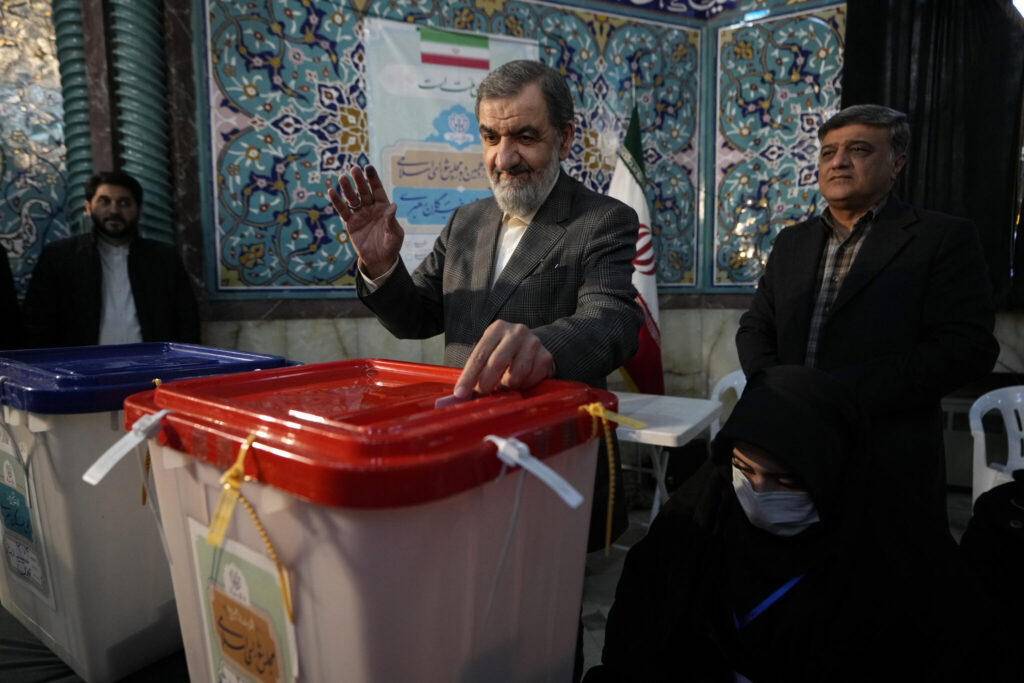
Under Parliament Speaker Mohammad Bagher Qalibaf, a former Revolutionary Guard general who supported a violent crackdown on Iranian university students in 1999, the legislature pushed forward a bill in 2020 that greatly curtailed Tehran’s cooperation with the United Nations nuclear watchdog, the International Atomic Energy Agency.
That followed then-President Donald Trump’s unilateral withdrawal of America from Iran’s nuclear deal with world powers in 2018 — an act that sparked years of tensions in the Middle East and saw Iran enrich enough uranium at record-breaking purity to have enough fuel for “several” nuclear weapons if it chose.
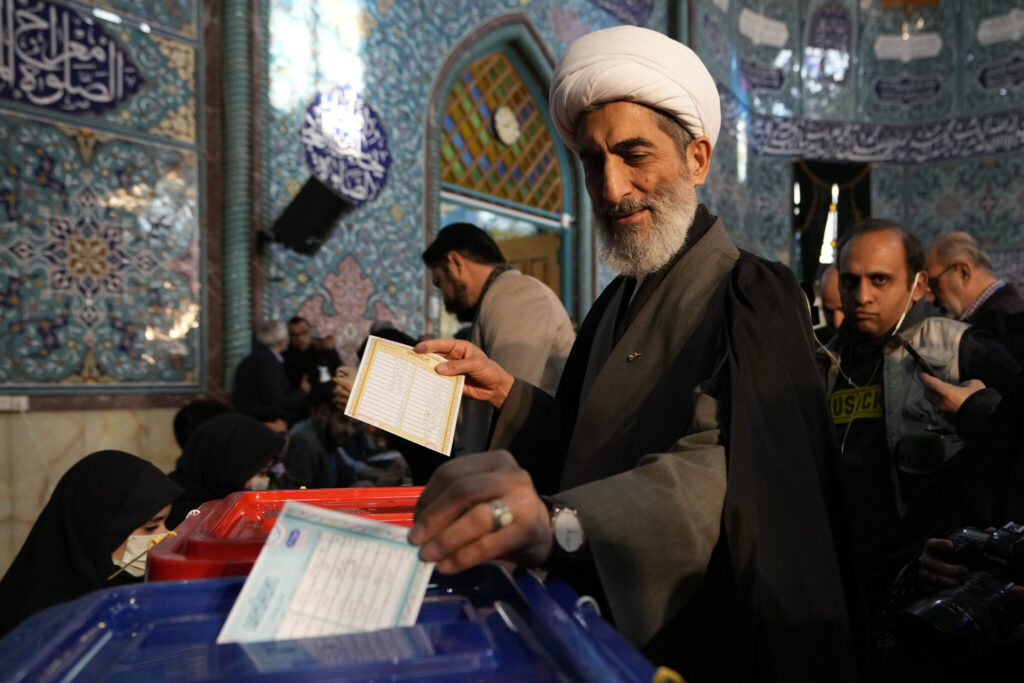
More recently, the parliament has focused on issues surrounding Iran’s mandatory head covering, or hijab, for women after the 2022 death of 22-year-old Amini in police custody, which sparked nationwide protests.
The protests quickly escalated into calls to overthrow Iran’s clerical rulers. A subsequent security crackdown killed over 500 people, with more than 22,000 detained.
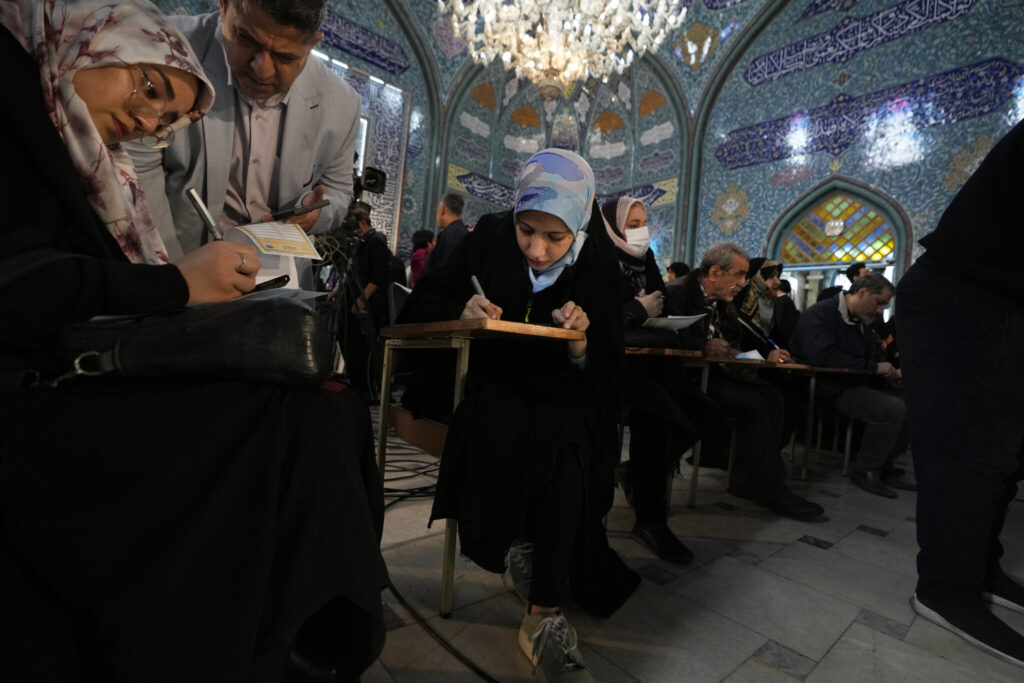
Calls for an election boycott have spread in recent weeks, including from imprisoned Nobel Peace Prize laureate Narges Mohammadi, a women’s right activist, who called them a “sham.”
The boycott calls have put the government under renewed pressure — since its 1979 Islamic Revolution, Iran’s theocracy has based its legitimacy in part on turnout in elections.
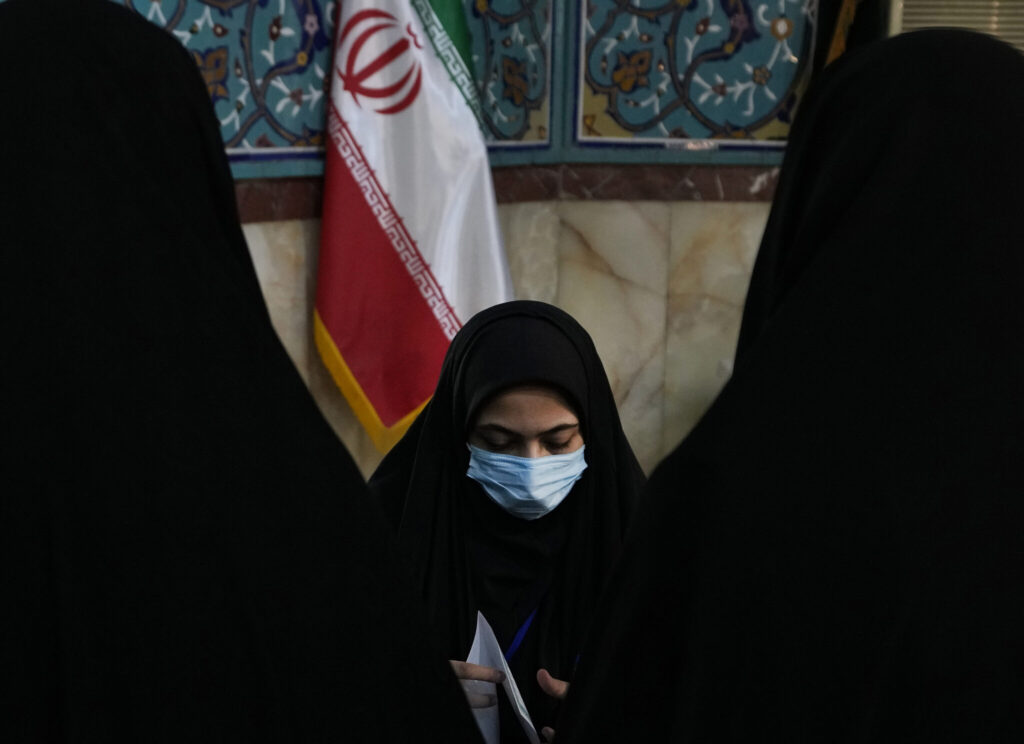
The state-owned polling center ISPA hadn’t put out election data prior to the vote until Thursday, something highly unusual as their figures typically get released much earlier. Its polling, based on a survey of 5,121 voting-age people, predicted a turnout of 23.5% in the capital, Tehran, and 38.5% nationally. It said the margin of error in the poll was 2%.
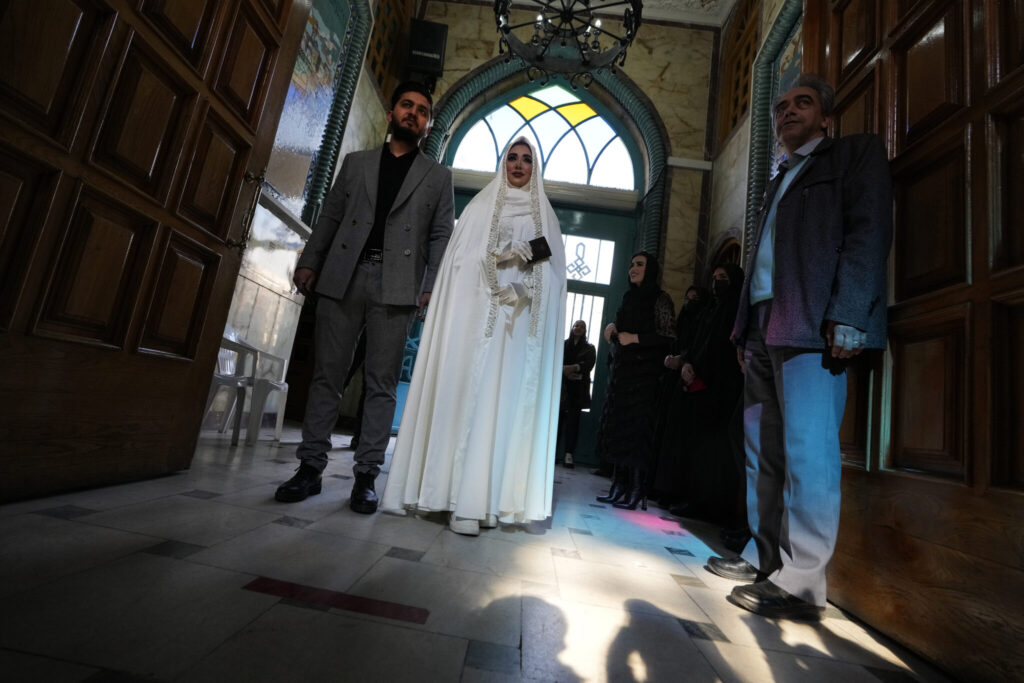
Iranian state television showed crowded polling stations but elsewhere, there appeared to be few voters braving the freezing temperatures in Tehran.
In one place, a young woman without a hijab and her mother, wearing one, entered teh polling station together. There was no comment from officials or police on hand.
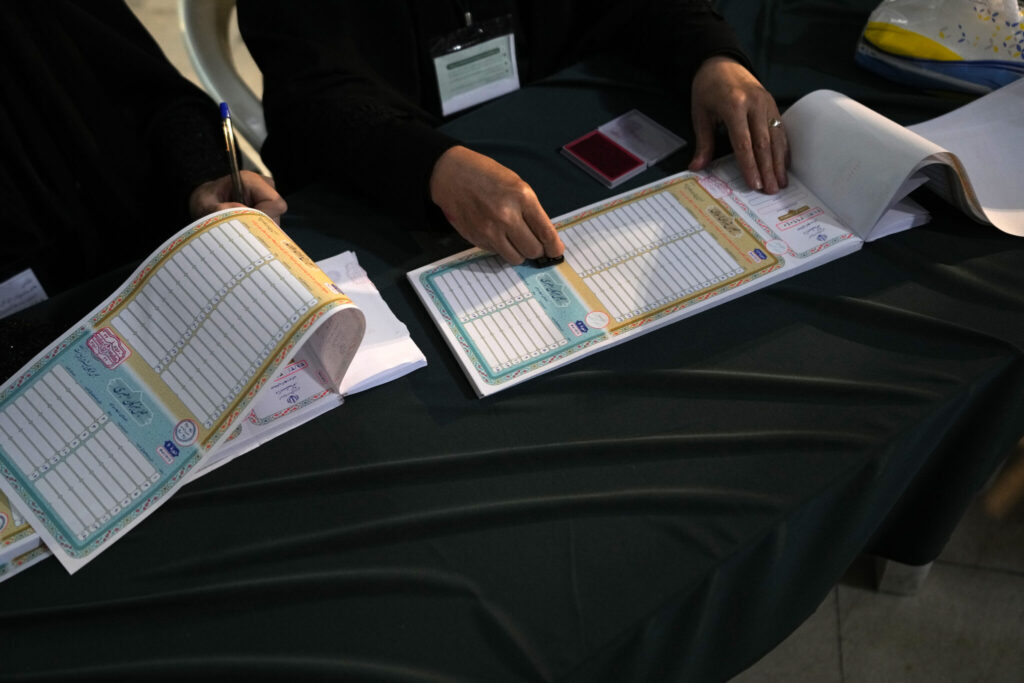
“I accompanied my mother who wanted to vote just to remind authorities about last year’s crackdown,” said the daughter, who gave her first name, Zohreh. Her mother voted for a relative moderate running in their district, while Zohreh declined to cast a ballot, she said.
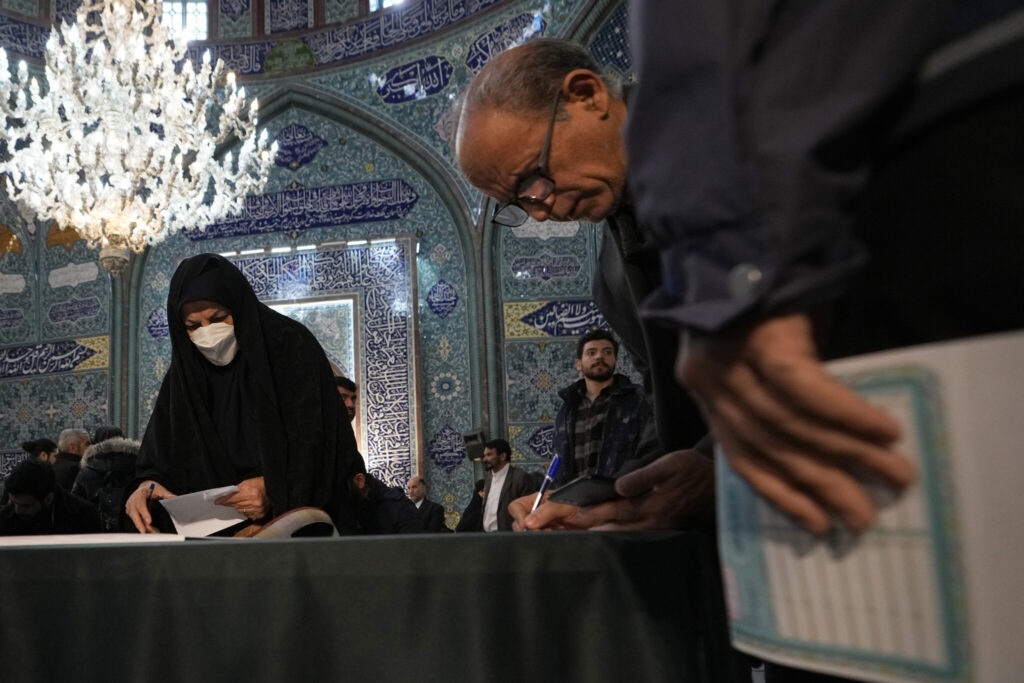
Meanwhile, a heavy security presence could be seen across the capital, with ordinary and anti-riot police officers visible in main squares and junctions. Some 200,000 security forces have been deployed across the country as over 59,000 polling stations opened. Another 1 million people reportedly are running the election, home to some 85 million people.
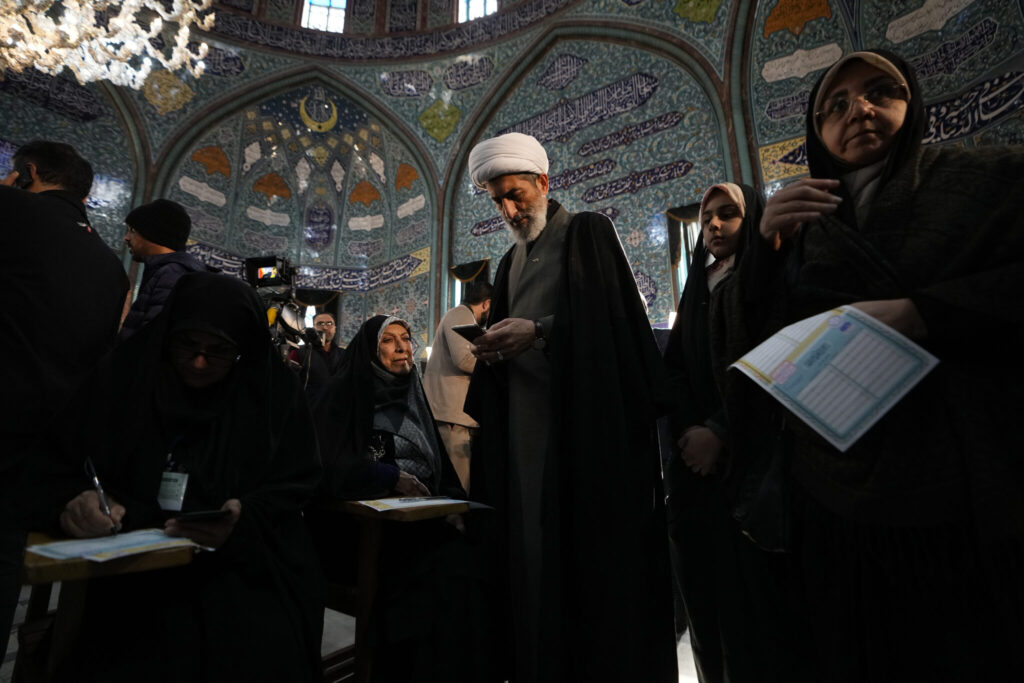
Estimates put the voting-age population at 61 million.
Polling places will be open until 8 p.m. local time (1630 GMT) after authorities extended the voting by two hours. Initial election results are expected as early as Saturday.
